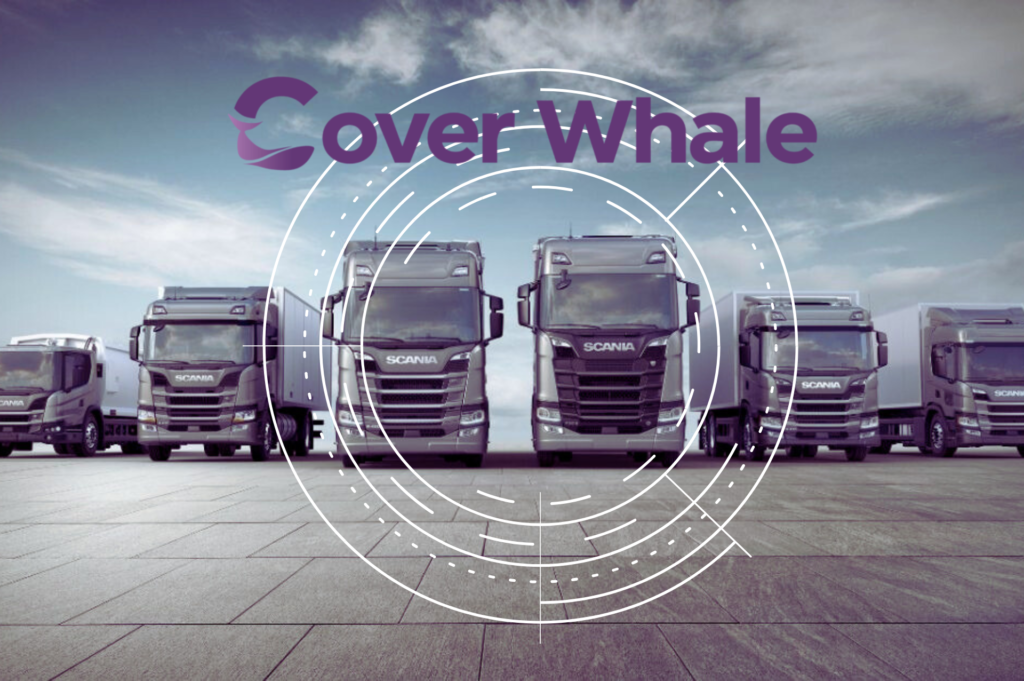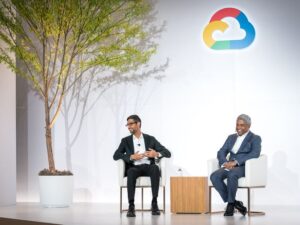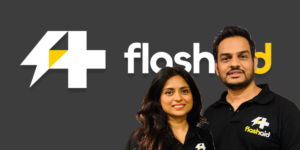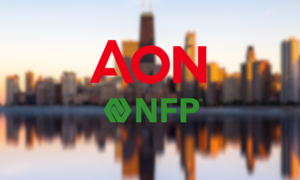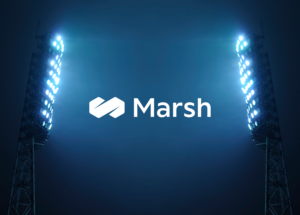As the Chief AI Officer at Cover Whale, Darien Acosta oversees the strategic direction and development of AI initiatives across the telematics-driven insurtech. With a keen focus on generative AI (Gen AI), he recognises the technology’s potential to transform various aspects of the business.

Acosta collaborates closely with senior management to identify opportunities where AI can significantly impact various areas of the company. He also works in tandem with the Chief Strategy Officer to formulate corporate market strategies, ensuring that AI is integrated into Cover Whale’s long-term vision. Insurtech Insights caught up with him to find out more.
How did you become involved with AI specifically?
I’m a New Yorker by birth, and this presented me with unique opportunities throughout my life. While still in high school, I began working for dot-com companies, gaining experience in data analysis. My education in downtown New York City exposed me to a diverse range of individuals pursuing various endeavours. The demand for technical talent at that time was significant, and even a 16-year-old with computer skills could find employment.
This early exposure set me on a path of leveraging technology and data to drive business value in a highly competitive market. I’ve been able to apply these skills across multiple industries while remaining in New York City. My career has spanned advertising, newspapers, magazines, digital-first media publications like Business Insider, technology at Yahoo, and logistics with Reef Technology, a parking lot company. Working with data across these fields provided me with a strong understanding of how to apply data to business on a general level.
When I joined Cover Whale, I brought this expertise, as well as my experience with AI processes and systems. I’ve held titles like ‘Head of Data Science’ in the past, but the term ‘data science’ has evolved over time, and what we now call AI was previously encompassed under data science. Throughout my career, I’ve been involved in various aspects of AI, including building machine learning algorithms to make predictions, often related to revenue or specific consumer segments. I worked on pricing models at Reddit and Conde Nast.My diverse skill set came to the forefront at Cover Whale, where I now lead a highly talented team, drawing upon my experience of what works and what doesn’t.
There’s a lot of apprehension surrounding generative AI, particularly in contrast to narrow AI, which operates within specific parameters. Is Cover Whale using generative AI? If so, how and what are your thoughts on its potential?
Cover Whale has embraced generative AI wholeheartedly, exploring its capabilities in two key areas: individual productivity augmentation and comprehensive automation.
On the individual front, we’ve implemented ChatGPT Enterprise, granting every employee access to cutting-edge large language models like ChatGPT, Claude, and custom models tailored for underwriting. These chatbots serve as intelligent companions, empowering workers to ask questions and automate tasks. For instance, Advanced Data Analysis enables users to provide an Excel file and inquire about specific data points. The AI seamlessly translates the request into code, generating actionable insights within minutes.
This approach not only streamlines operations but also enhances individual productivity. Analysts can now retrieve information with a mere question, saving valuable time and boosting efficiency.On a broader scale, we’re using generative AI to establish a comprehensive automation framework. Our in-house development, Bob, an acronym for “a bundle of bots,” is revolutionising customer service. AI-powered bots intelligently route customer inquiries, process data, and generate responses, handling routine tasks with remarkable speed and accuracy.Imagine a customer seeking policy expiration details. The bot promptly requests the policy number, retrieves the information, and composes a personalised response, all within two minutes. This automation not only reduces response times but also extends service availability beyond traditional hours.
Our vision extends beyond customer service. We aim to integrate this automation mindset across the organisation, leveraging AI to streamline operations, reduce manual tasks, and enhance overall efficiency.Regarding apprehensions, we believe generative AI, when implemented responsibly and ethically, holds immense potential for transformative change. It empowers individuals, improves customer experiences, and drives operational efficiency.
Cover Whale is committed to embracing AI responsibly, ensuring its alignment with our values and ethical principles. We believe AI, particularly generative AI, is not a threat but a powerful tool for shaping a brighter and more efficient future.
Some people fear that AI will completely replace jobs, leading to widespread unemployment. How does Cover Whale address this concern, particularly given its focus on automation?
While there is a genuine risk of AI displacing certain roles, Cover Whale believes that AI can also create new opportunities and redefine existing ones. At Cover Whale, we’re embracing AI with a proactive approach, ensuring that its implementation goes hand-in-hand with workforce development and skill enhancement. Our smaller company structure and agile culture foster a mindset of adaptation and innovation. Employees are encouraged to embrace new skills, pivot their expertise, and explore new career paths. We view AI as a tool to augment human capabilities, not replace them.
For instance, customer success agents who previously handled routine tasks can now focus on higher-value activities, such as building deeper customer relationships and providing personalised guidance. They become “prompt engineers” who manage AI interactions, ensuring seamless customer experiences and identifying opportunities for AI improvement.
This concept of “human in the loop” is crucial for maintaining accountability and ensuring that AI systems operate ethically and effectively. Humans remain the ultimate decision-makers, ensuring that AI is used responsibly and aligned with Cover Whale’s values.We recognise that large corporations may face greater challenges in adapting to AI-driven changes, potentially leading to job displacement. This highlights the importance of proactive workforce planning and upskilling initiatives to ensure a smooth transition into the AI-powered future.Cover Whale is committed to fostering a culture of innovation and adaptability, empowering employees to embrace AI as a tool for growth and career advancement. We believe that AI can coexist with human talent, creating a more efficient, insightful, and human-centred workplace.
While the potential benefits of AI are undeniable, implementing such transformative technologies can be challenging. What obstacles have you encountered in integrating AI into Cover Whale’s operations, and how have you addressed them?
Embracing AI at Cover Whale has presented several challenges, primarily related to cultural adaptation and knowledge transfer. We’ve found that introducing AI into a company with established practices and a long history of traditional methods can be met with resistance and scepticism. Many employees, particularly those with years of experience in the industry, may find it difficult to adopt a new way of working that deviates from their familiar routines. This poses a significant hurdle in effectively integrating AI into operations.To address this challenge, we’ve adopted a gradual and deliberate approach, gradually introducing AI tools and demonstrating their practical applications. We believe that providing hands-on experience and tangible benefits can gradually shift perceptions and foster acceptance of AI.
Furthermore, we’ve focused on enhancing employee training and upskilling initiatives, equipping them with the knowledge and skills required to navigate the complexities of AI. This empowers employees to confidently adopt AI-powered tools and processes. Incentivising AI adoption is another crucial aspect of our strategy. We recognise that individuals are more likely to embrace change when they recognize the potential rewards. By rewarding early adopters and recognising their contributions, we encourage broader participation in AI-driven innovation.
Cover Whale is committed to fostering a culture of continuous learning and adaptation, ensuring that AI is seamlessly integrated into our operations while maintaining employee engagement and satisfaction. We believe that AI, when implemented thoughtfully and responsibly, can not only revolutionise our business but also empower our employees to reach new heights of productivity and innovation.

Can you elaborate on Cover Whale’s use of AI in driver training and safety initiatives?
Certainly. AI, particularly generative AI, has become an integral part of our driver training and safety programmes. By analysing telematics data, AI algorithms can identify risky driving patterns among our fleet operators. This allows us to generate personalised coaching programmes tailored to each driver’s specific needs, addressing their unique driving behaviours.
Traditionally, creating such personalised coaching programmes at scale would require a dedicated team of experts, making it an impractical and resource-intensive endeavour. However, AI has transformed this process, enabling us to automate the creation of customised coaching plans.
Using large language models and prompts, we define the driving issues identified through telematics data and instruct the AI to generate personalised coaching programs. These programs are then reviewed by our coaching managers to ensure they align with our safety standards and address the specific concerns for each driver.
Once the coaching programmes are finalised, we use another AI system to reach out to the respective policyholders. This system can make personalised phone calls, reminding drivers of their unsafe practices and encouraging them to adopt safer driving habits. While this voice-enabled AI application is still in its early stages, it holds immense potential for further automating driver coaching and promoting a culture of safe driving.In essence, Cover Whale’s AI-driven approach to driver training and safety enables us to scale our coaching efforts effectively, provide personalised guidance to a large number of drivers, and proactively address potential safety issues. This has led to significant improvements in driver behavior and overall fleet safety.
What are the key benefits of Cover Whale’s AI-powered driver training and safety initiatives?
They are multifaceted. I will list the five main points for you:
- Personalised Coaching: AI enables us to create tailored coaching programs for each driver, addressing their specific driving behaviours and risk factors. This individualised approach is far more effective than generic coaching programs.
- Scalable Coaching: AI automates the creation of coaching programs, allowing us to provide personalised guidance to a large number of drivers without the need for a massive coaching team. This scalability is crucial for our growing fleet.
- Proactive Safety Interventions: AI identifies risky driving patterns early on, allowing us to intervene proactively and address these concerns before they lead to accidents. This preventive approach enhances overall fleet safety.
- Data-Driven Insights: AI algorithms analyse vast amounts of telematics data, providing us with valuable insights into driver behaviour and risk factors. These insights inform our coaching strategies and help us identify areas for improvement.
- Cost-Effectiveness: AI automates many aspects of the driver training and safety process, reducing the need for manual intervention and associated costs. This cost-effectiveness allows us to allocate resources more efficiently.
Overall, our AI-powered driver training and safety initiatives have proven to be a game-changer, enhancing driver behaviour, improving fleet safety, and driving operational efficiency.
How does Cover Whale’s AI-powered driver training system address risky driving behaviours?
In cases of identified risky driving patterns, our automated training system proactively reaches out to the concerned driver via a phone call. These calls serve as timely warnings, alerting drivers to their unsafe practices and the associated risks. This direct communication helps raise awareness and encourage behavioural changes.We do that by leveraging the capabilities of automated systems. AB testing is used to refine driver coaching approaches. By dividing drivers into test groups and applying different coaching styles to each group, we can compare the effectiveness of various methods. Through iterative AB testing, we identify the most successful coaching strategies based on measurable outcomes.
Can you provide specific examples of how Cover Whale’s AI initiatives have impacted safety and premiums?
While I don’t have immediate access to detailed figures, I can confirm that the AI-powered safety initiatives implemented by my team are expected to yield tangible results within the next year. Currently, the focus lies on enhancing efficiency and scaling our approach, laying the groundwork for future success in reducing accidents and lowering premiums.
However, in terms of Bob, our AI powered ‘Bundle of Bots, we’re currently on track to train Bob to completely automate over 21 specific actions which previously required a human to perform. While it is important to keep the human in the loop to maintain quality and correct for errors, the long term efficiency gains of being AI-first will yield a compounding effects soon.
Interview by Joanna England

Joanna England is an award-winning journalist and the Editor-in-Chief for Insurtech Insights. She has worked for 25 years in both the consumer and business space, and also spent 15 years in the Middle East, on national newspapers as well as leading events and lifestyle publications. Prior to Insurtech Insights, Joanna was the Editor-in-Chief for Fintech Magazine and Insurtech Digital. She was also listed by MPVR as one of the Top 30 journalist in Fintech and Insurtech in 2023.

